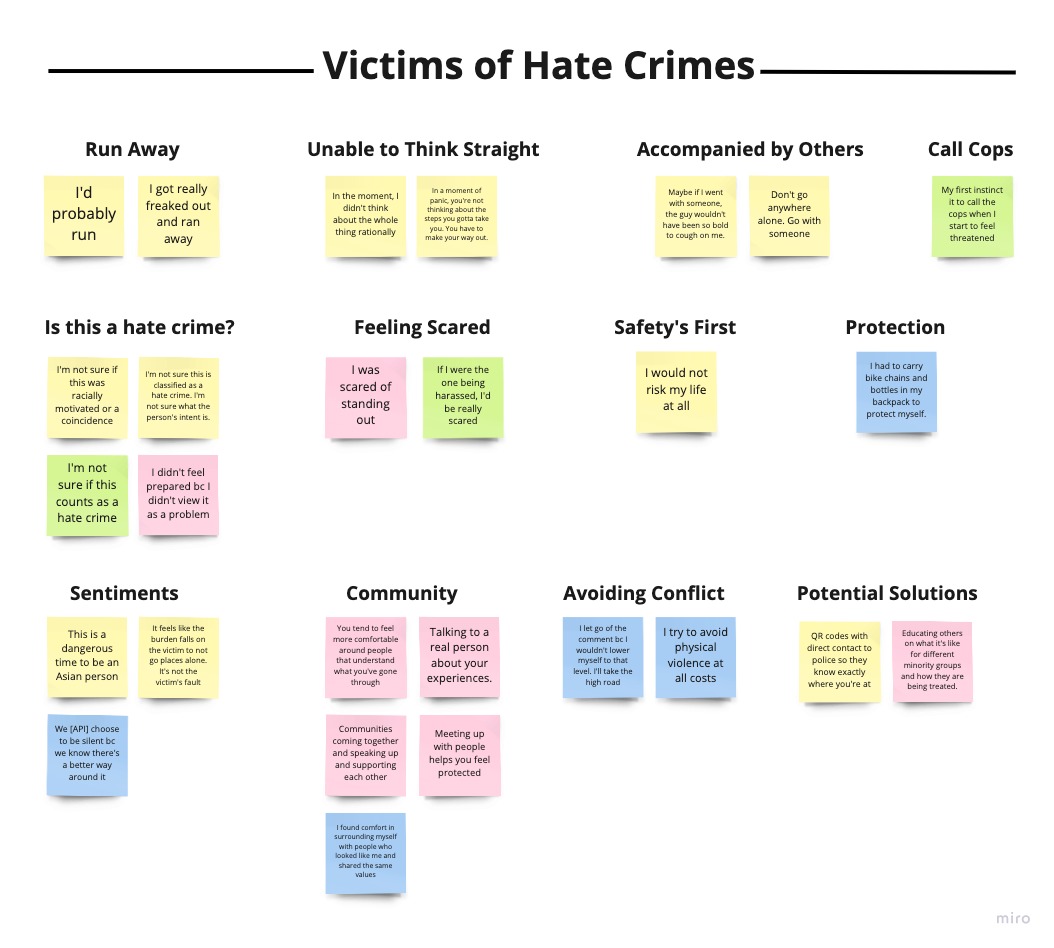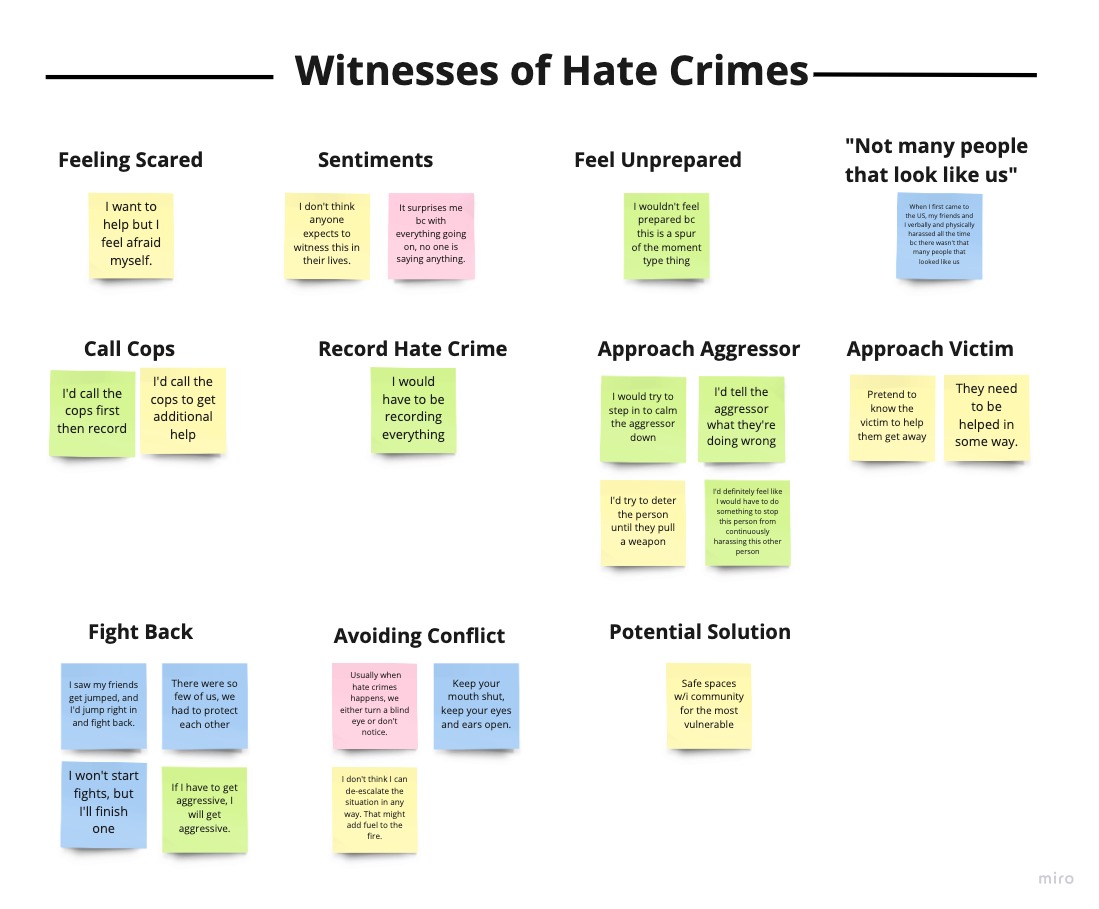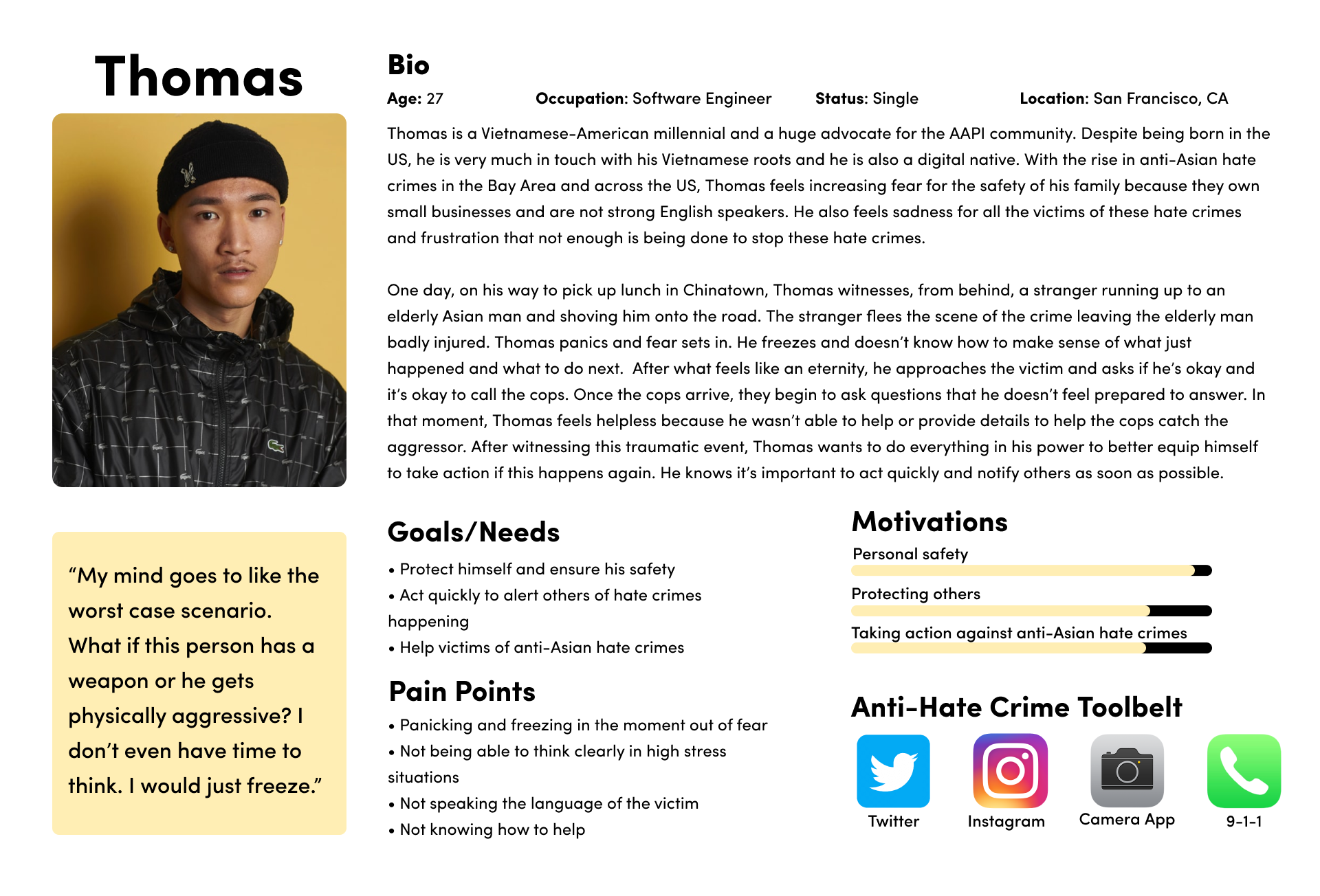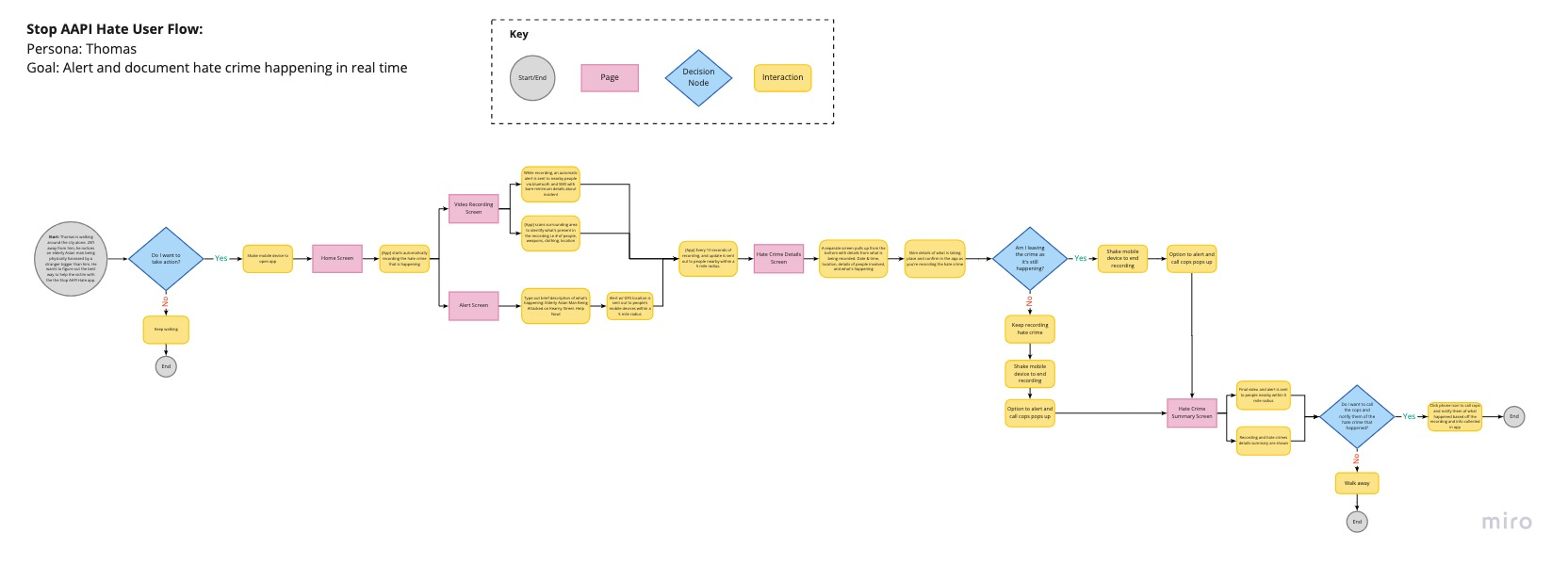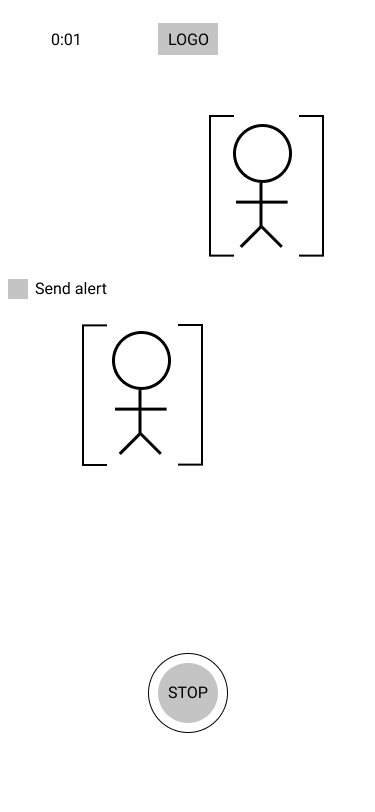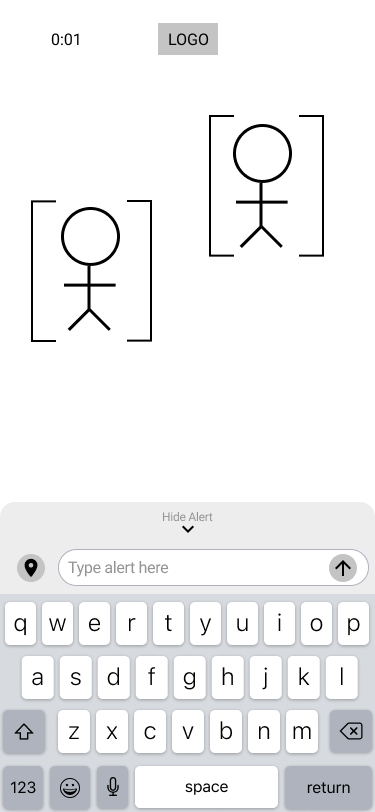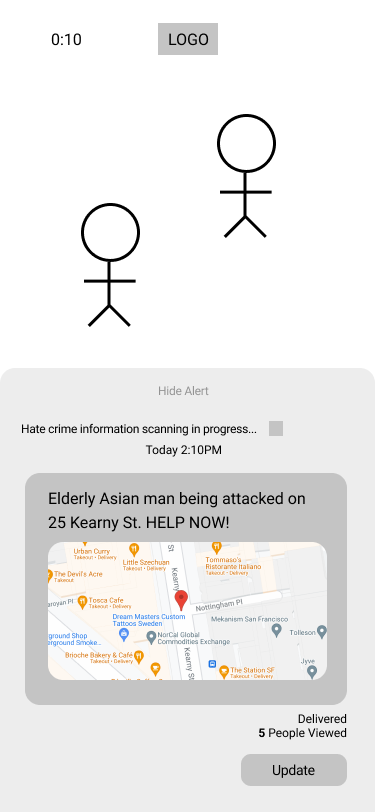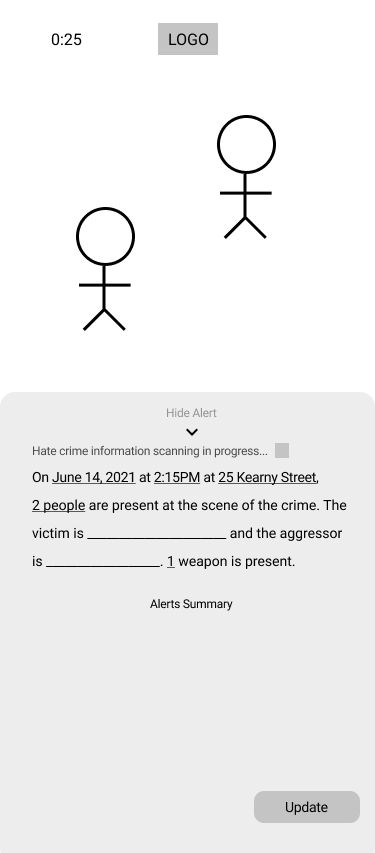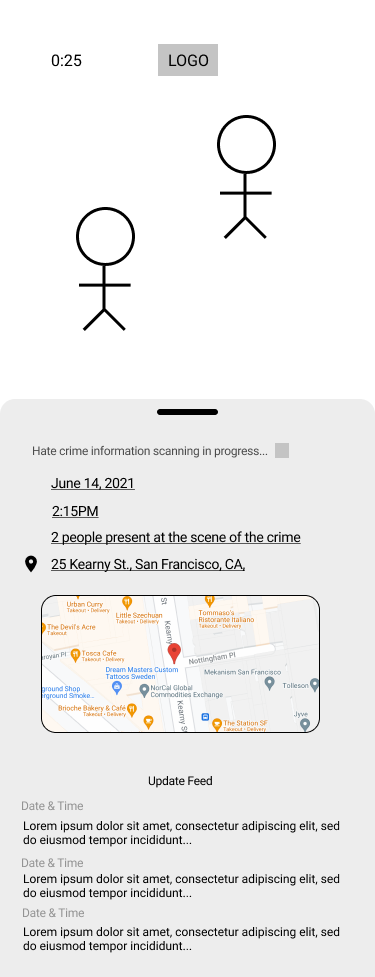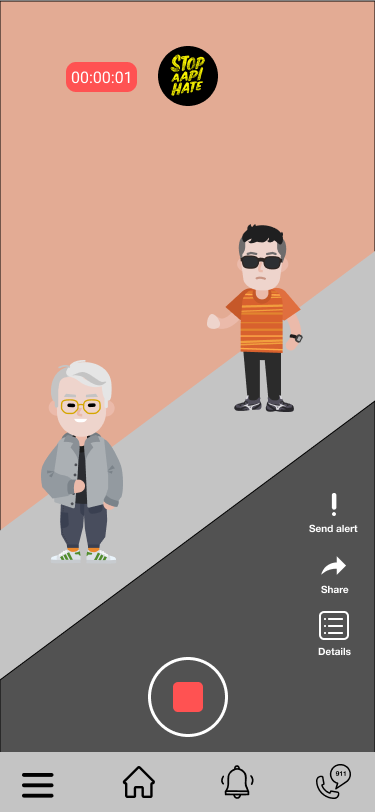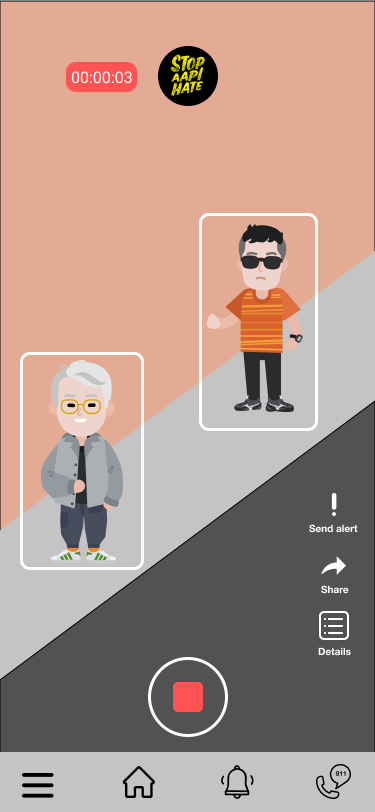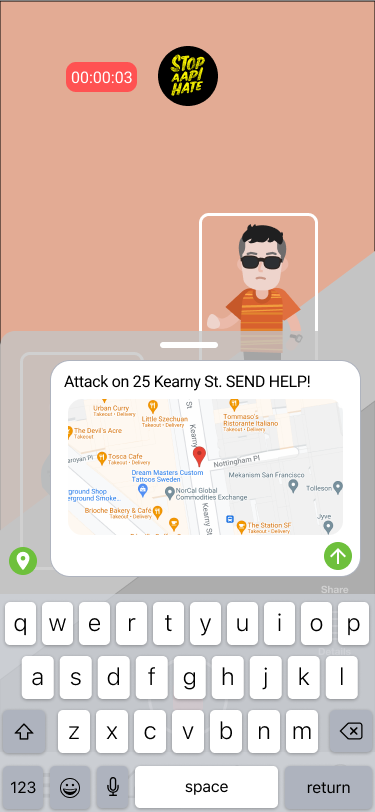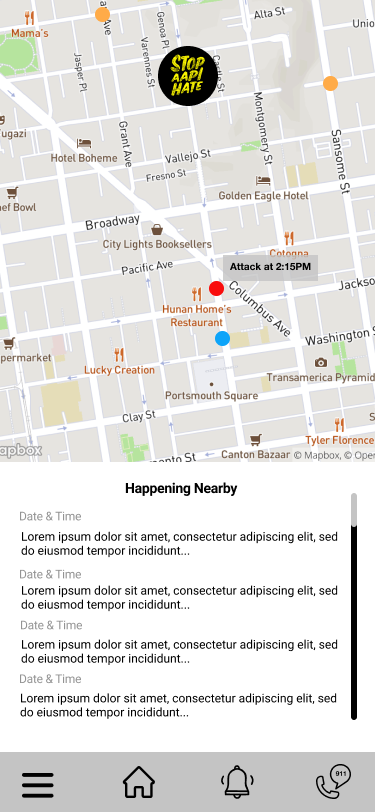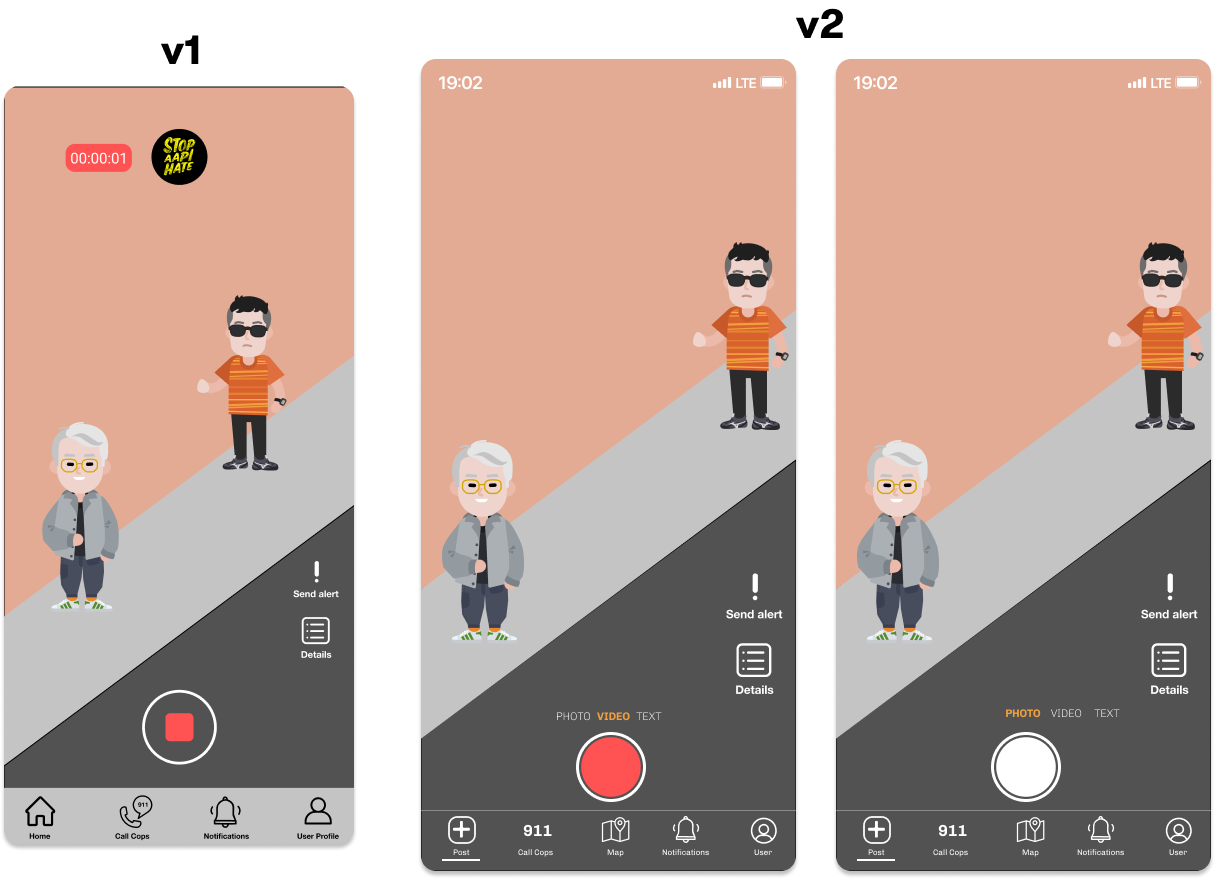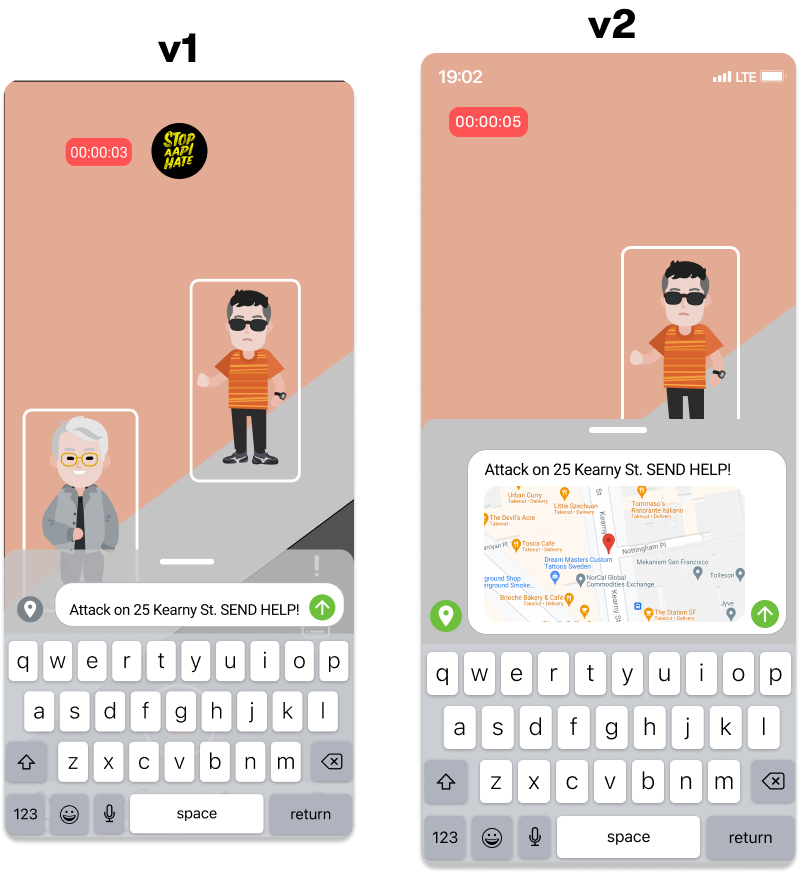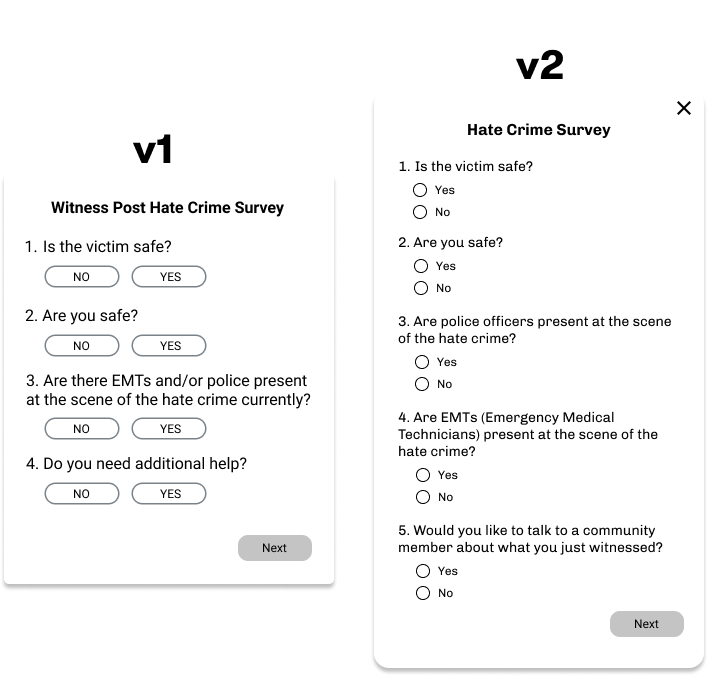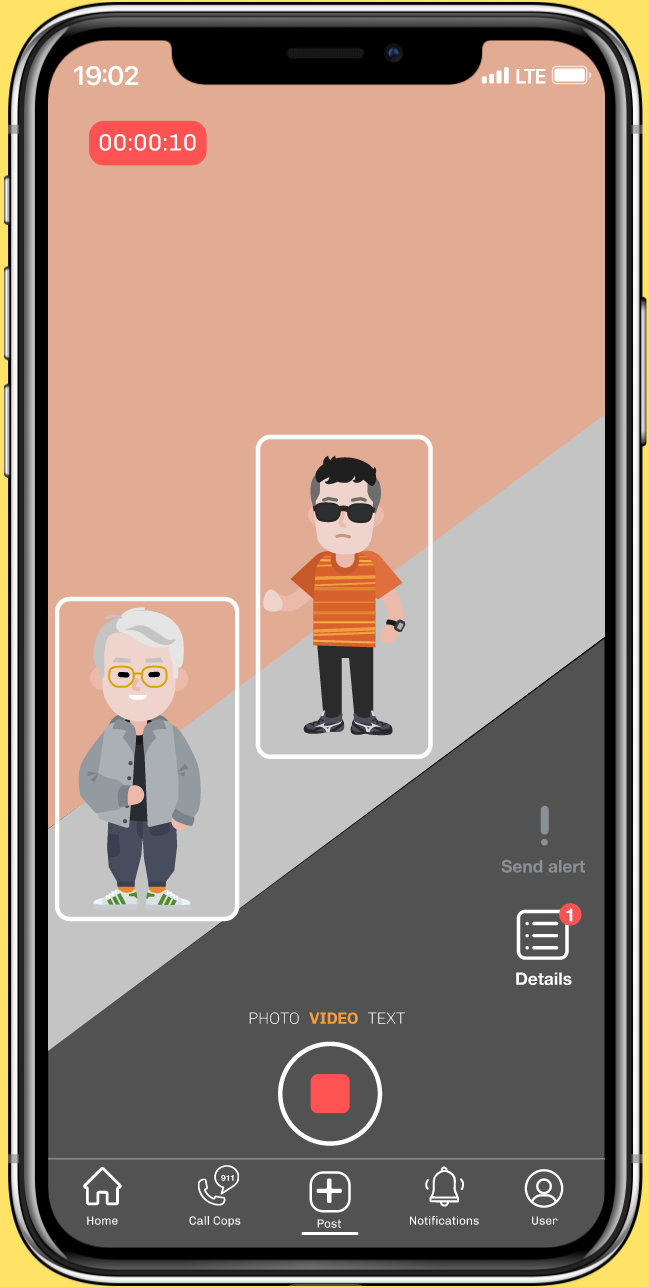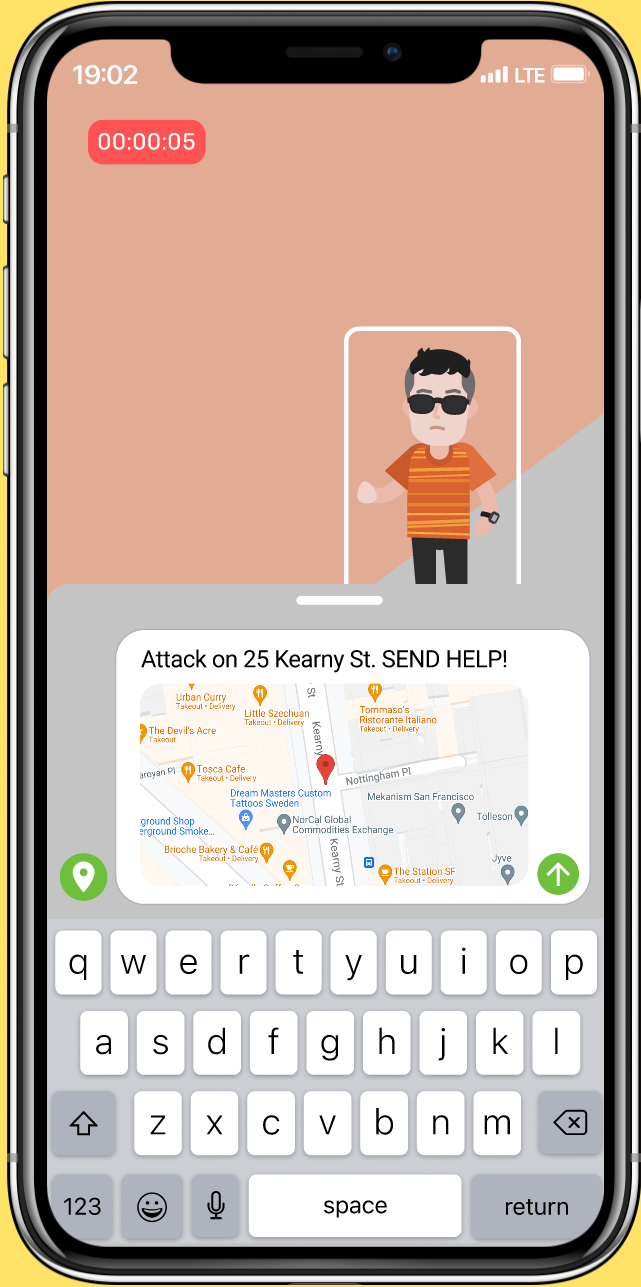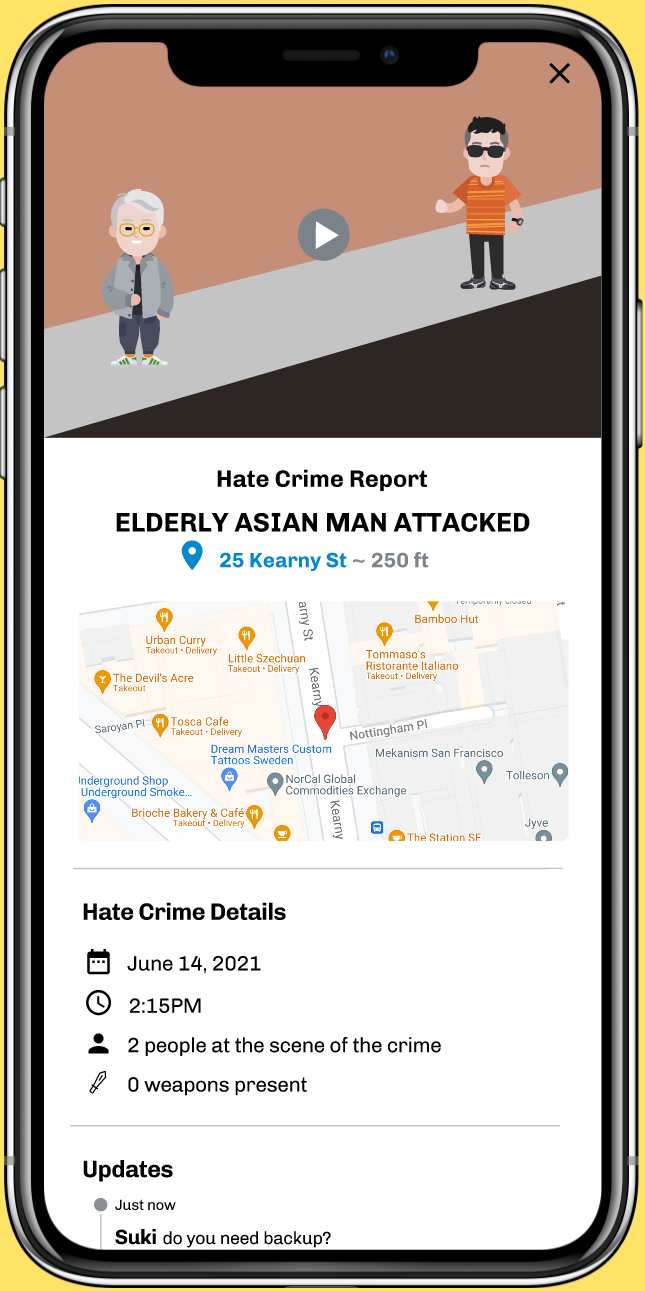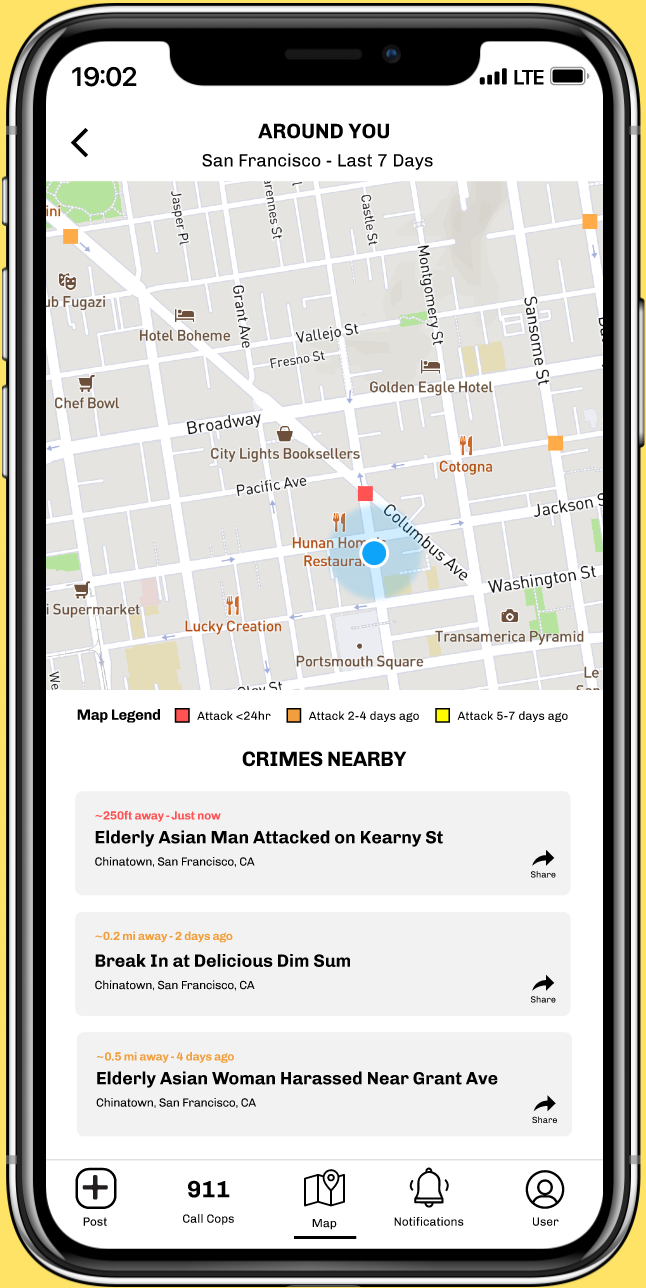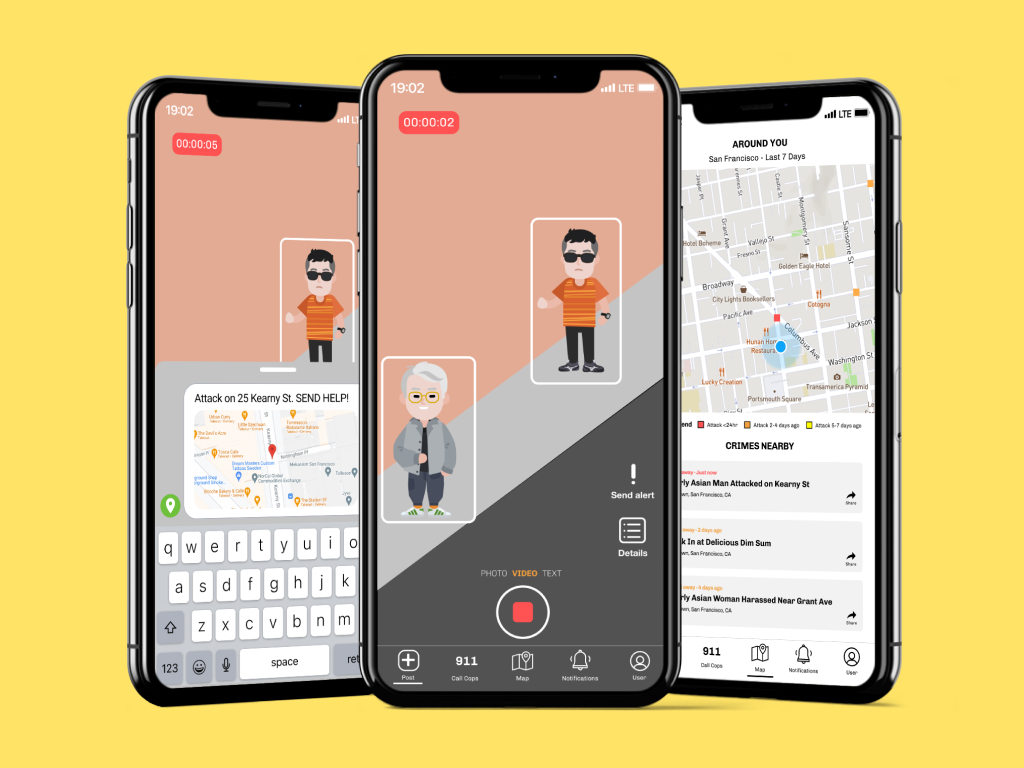
Stop AAPI Hate
Designing an end-to-end app that empowers witnesses to document hate crimes and take action
CLIENT
Stop AAPI Hate
(Solo Spec Project)
ROLE
UX Researcher
UX & UI Designer
TIMELINE
June - July 2021
80+ Hours
TOOLS
Figma
Miro
Background
At the height of the COVID-19 pandemic, the Stop AAPI Hate reporting center was created in response to the alarming rise of xenophobia and bigotry against Asians in the United States. Currently, they offer an 18 step form on their website for reporting anti-Asian hate crimes and various multilingual resources on safety measures for those directly impacted.
I was tasked with desigining a mobile app that streamlines the process of reporting anti-Asian violence while also protecting the safety of the individual who is reporting the crime and the victim of the crime.
THE PROBLEM
How might we help witnesses of hate crimes take action in a safe, quick, and efficient way?
The Solution
A mobile app where witnesses can record hate crimes in real time and send alerts to nearby users simultaneously.
Here’s a look at some of the key features for the Stop AAPI Hate app. For a more in-depth understanding of my design process, scroll down!
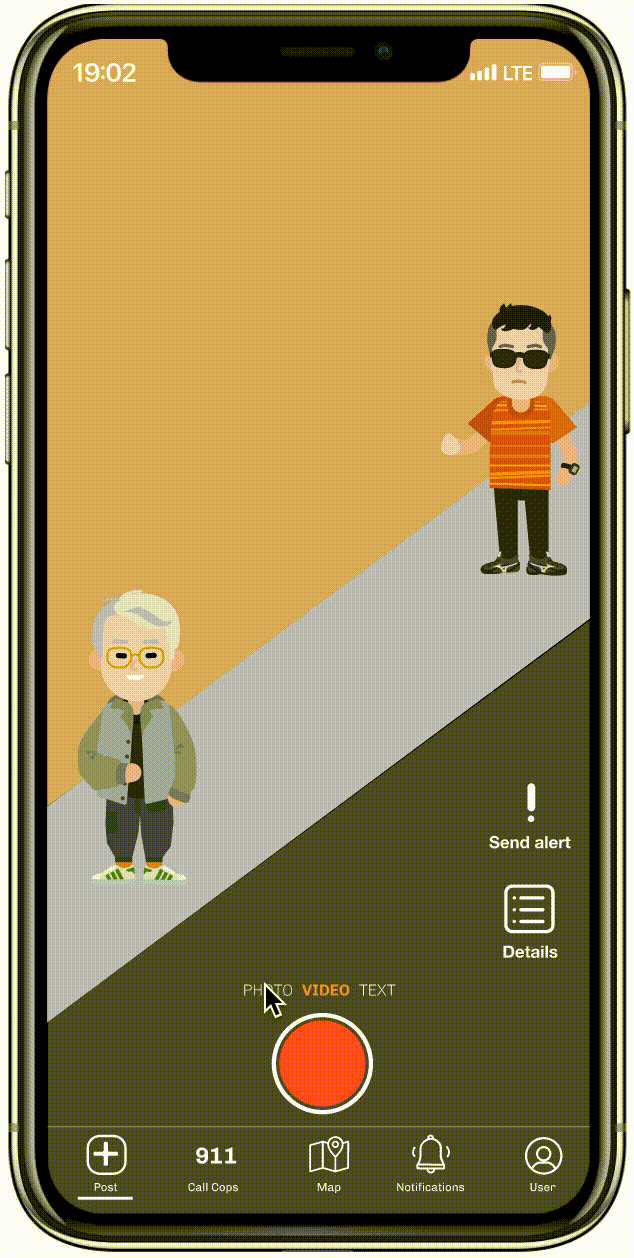
Document the hate crime
Witnesses can record a video, take a picture, or just send a text alert of the hate crime they're witnessing depending on how much time they have.
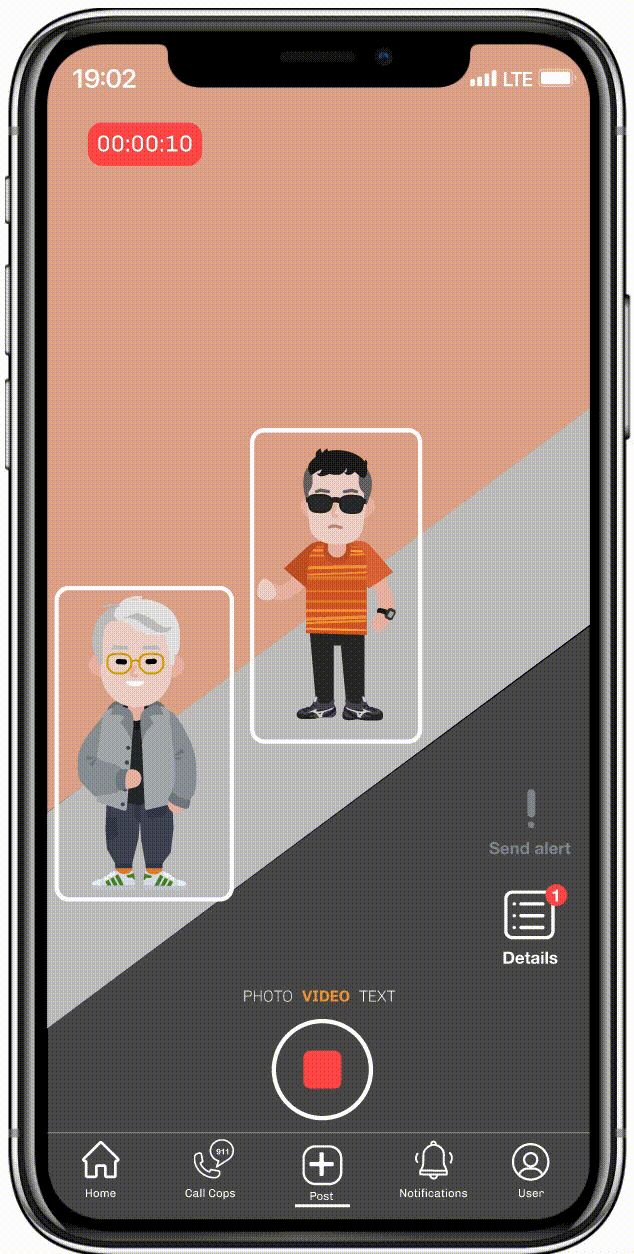
Collect hate crime details
While witnesses are documenting the hate crime, the app scans the surrounding area and collects relevant information such as location and if weapons are present.
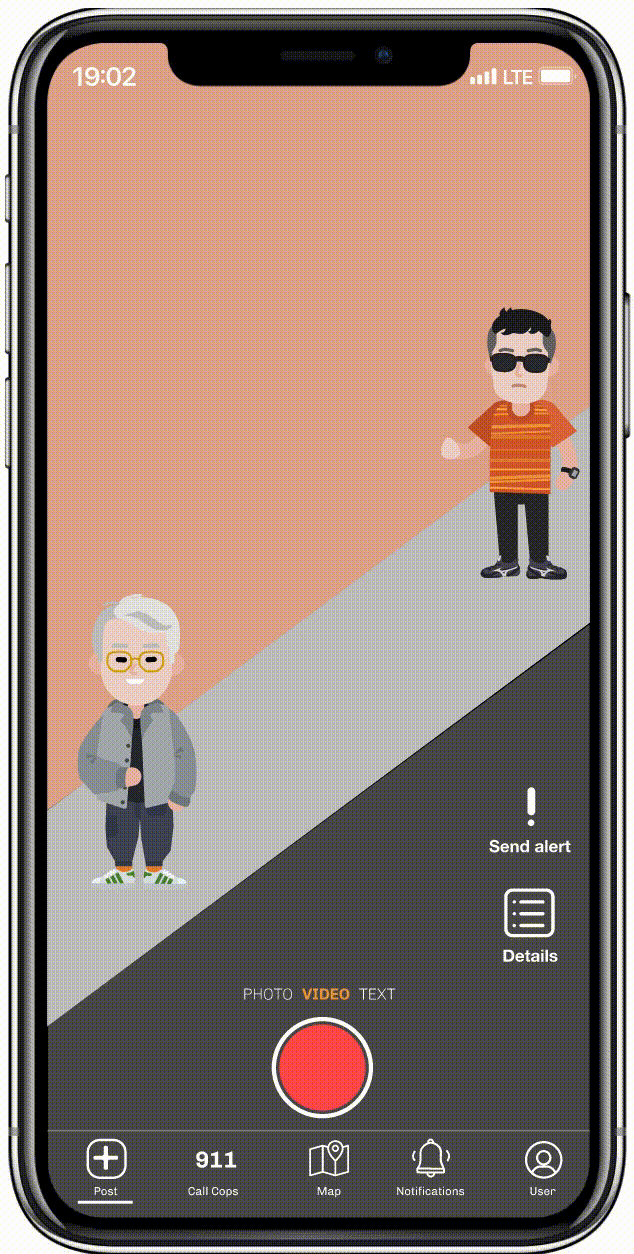
Spread awareness and send automatic alerts
After 5 seconds have passed in the recording, an automatic alert is sent out to nearby users. It contains a pre-populated SOS message and the location of the hate crime.
Now, let's talk process!
Secondary Research
Through my secondary research, I sought to understand the current state of anti-Asian hate crimes in the US. Specifically, I wanted to learn what is considered a hate crime, what is required when reporting a hate crime, and why reporting is so low for amongst Asian Americans. Below is a summary of my findings.
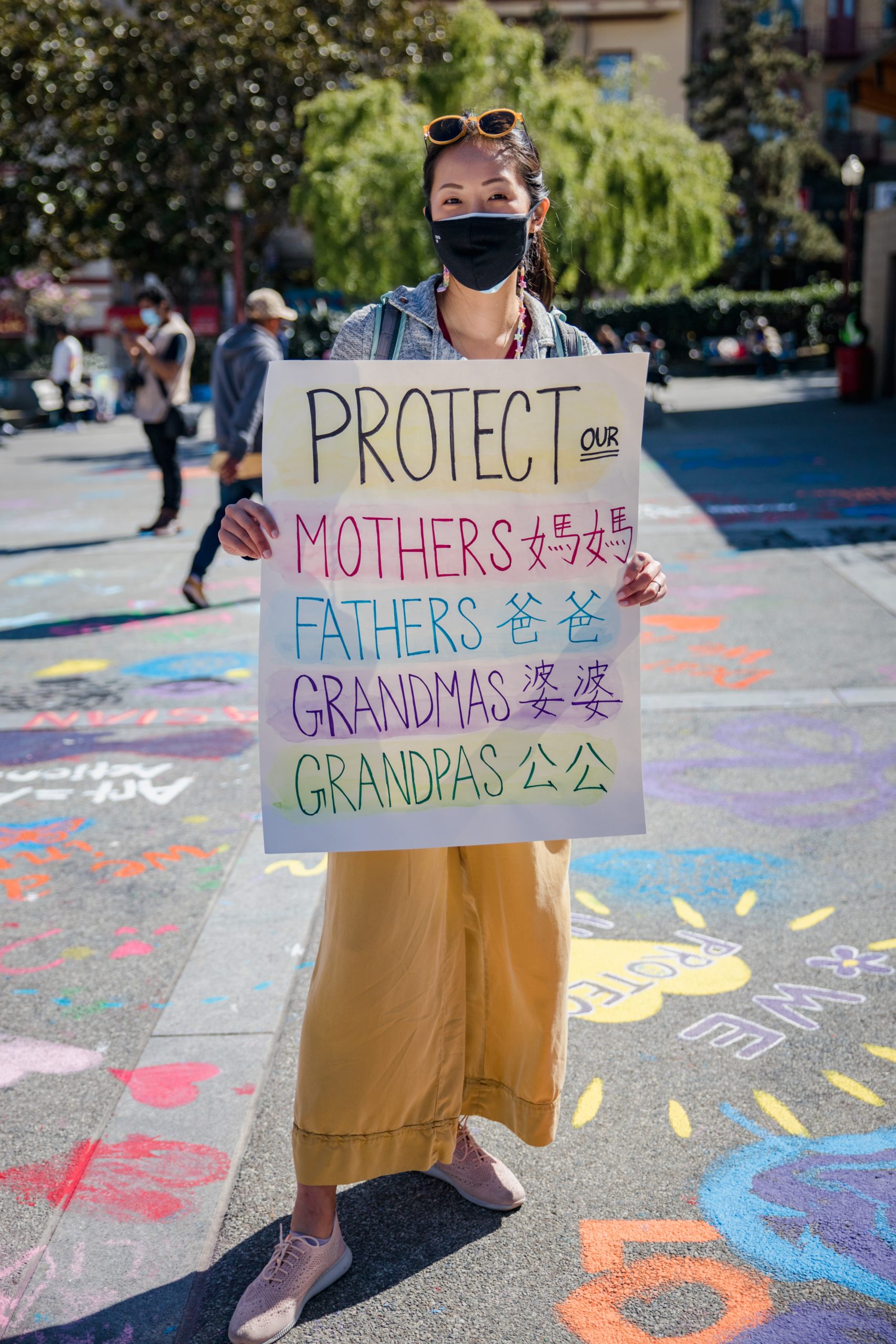
Photo by Jason Leung on Unsplash
What is a hate crime?
A hate crime is a violent crime committed with bias against people or groups with specific characteristics such as race, religion, sexual orientation, etc.
What is the current state of anti-Asian hate crimes in the US?
- Over 9,000 anti-Asian incidents have been reported since the start of the pandemic
- With the economy re-opening, there are more opportunities for attacks - everything from racial slurs to outright assaults
Why is reporting so low amongst Asian Americans?
- Distrust in law enforcement
- Immigration status
- Language barrier
- Unsure if attack is a hate crime
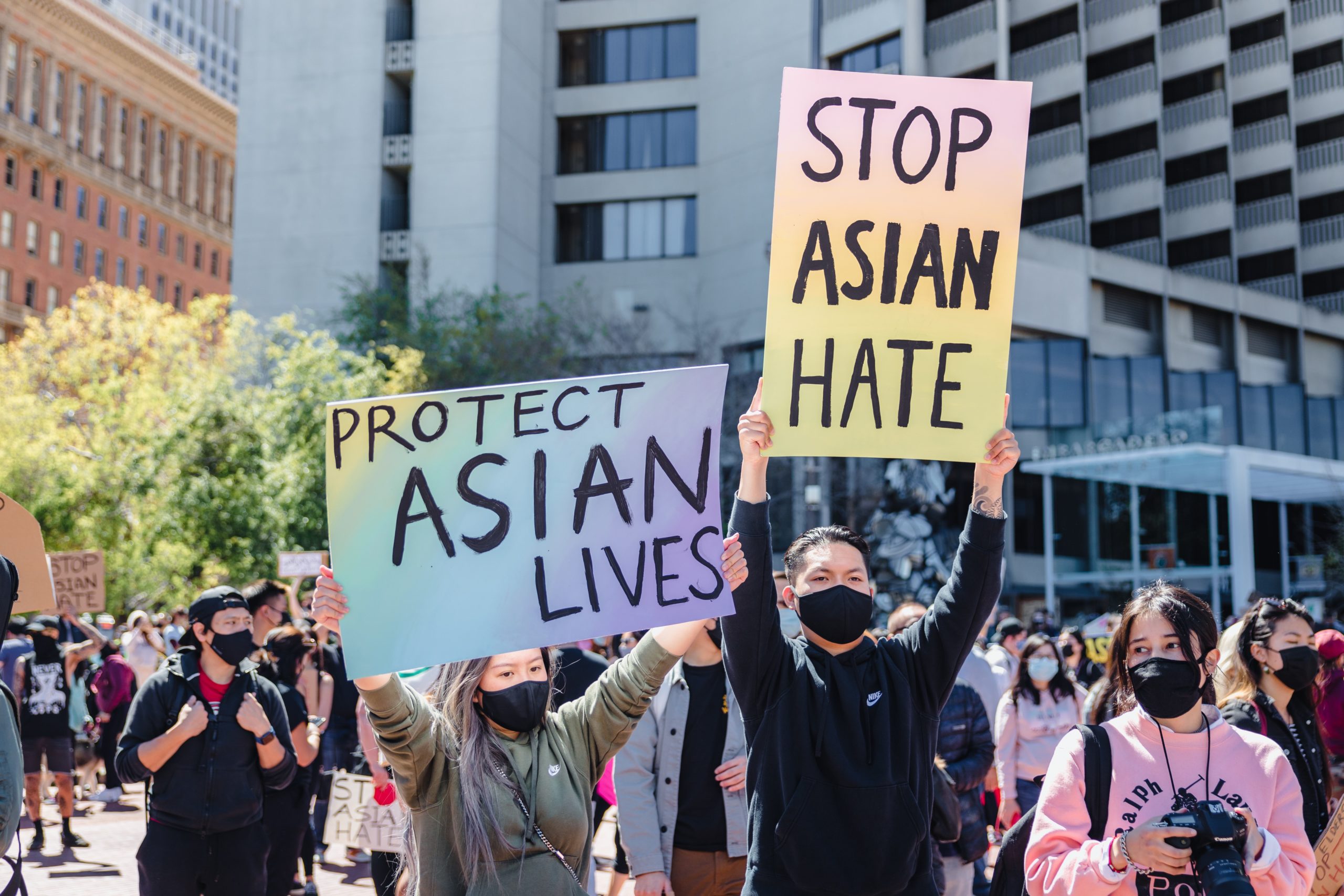
Photo by Jason Leung on Unsplash
Competitive Analysis
Afterwards, I scoped out the competition to see how other platforms were helping users report crimes and spread news of crimes happening in their area.
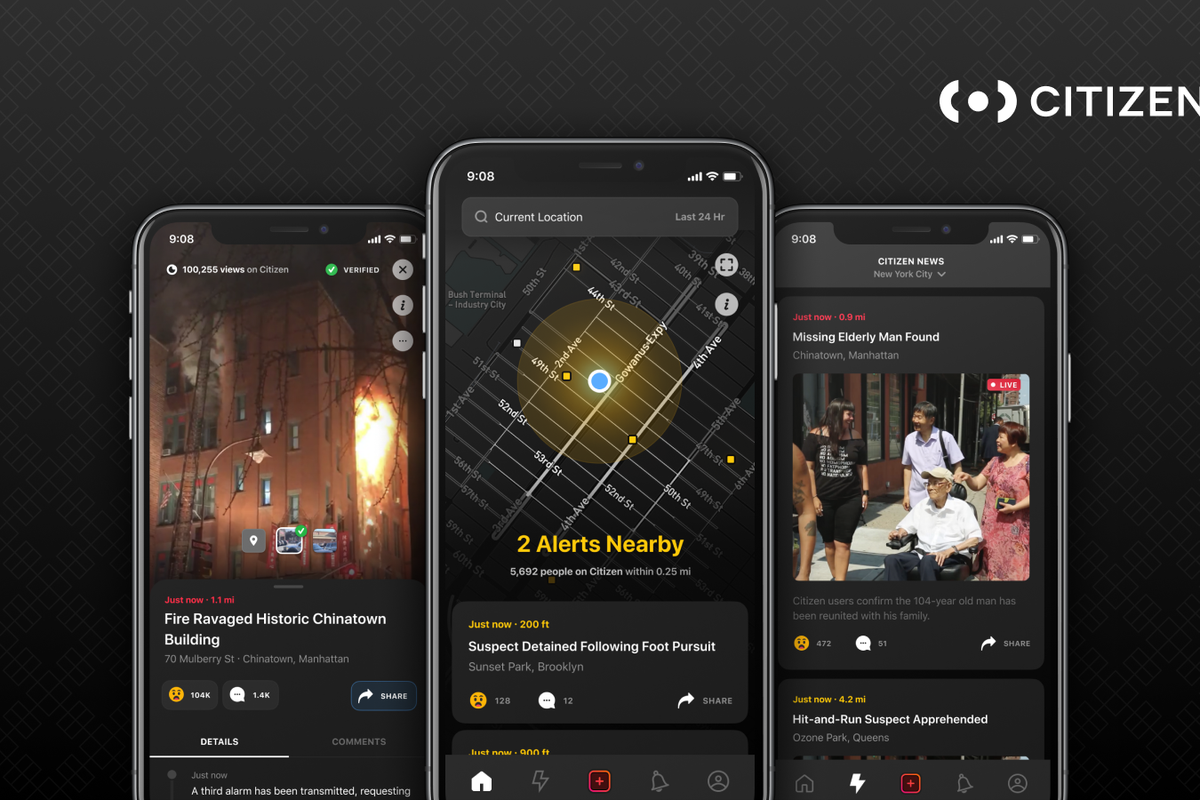
Citizen
STRENGTHS
- Access safety alerts in real time
- Live videos of crimes
- Map that show crimes in the area
WEAKNESSES
- No tips on what to do in emergency situation
- Constant notification can create paranoia
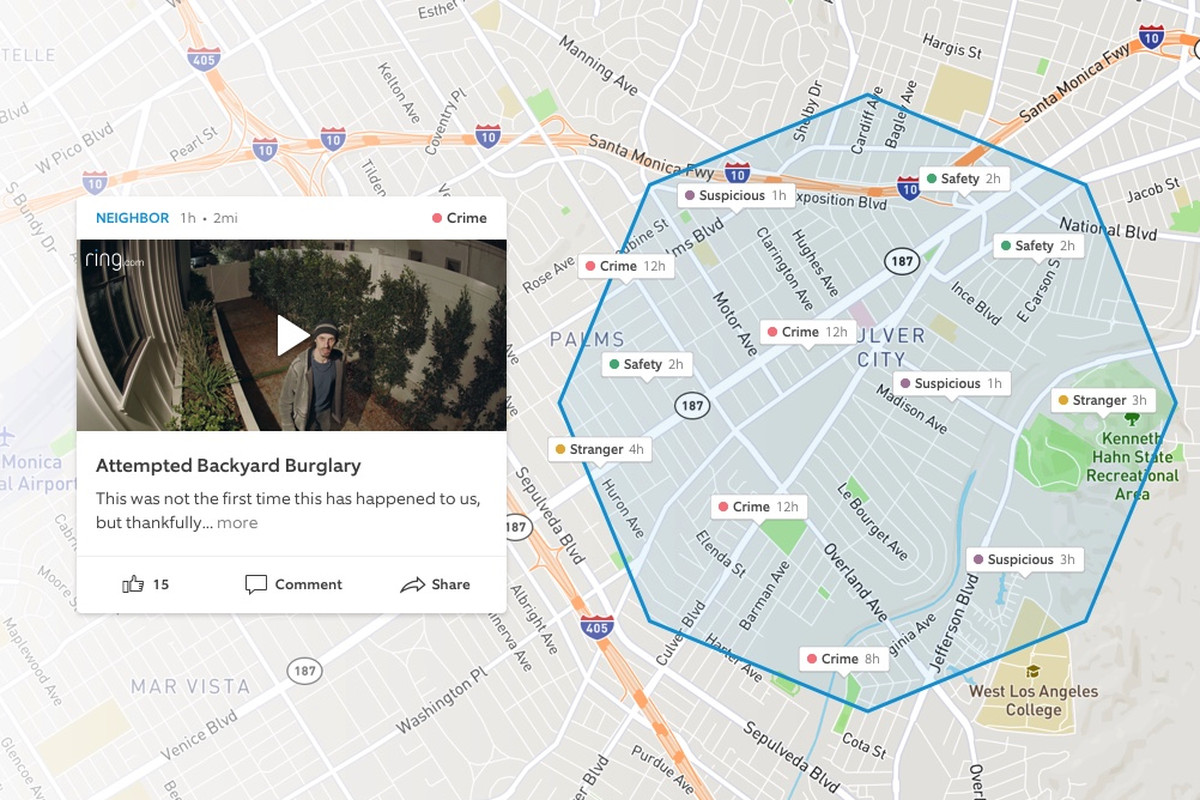
Nextdoor
STRENGTHS
- Access safety alerts in real time
- Live videos of crimes
- Map that show crimes in the area
WEAKNESSES
- Racist language may be in crime reporting
- Amount of crime reports may contribute to distrust in neighborhood
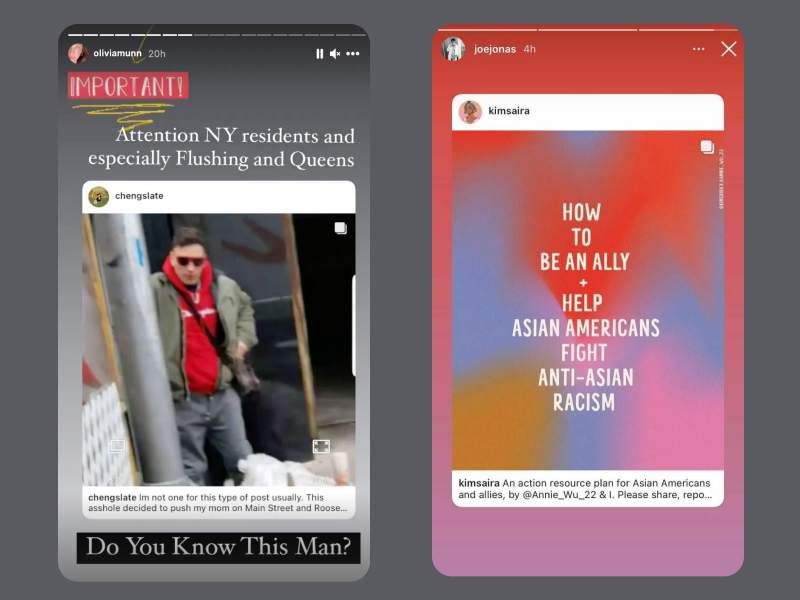
STRENGTHS
- Multiple formats to spread news (Stories, Posts, etc.)
- Easier to organize people to take action
- Lots of resources available on best actions to take
WEAKNESSES
- Hard to spread news in real time
- Echo chamber effect
Competitive Analysis Insights
INSIGHT 01
Multiple ways to document crime AND spread news of crimes
INSIGHT 02
Steps provided on what to do in in case of these situations
INSIGHT 03
Community to reach out to if you're impacted or need support
User Interviews
I rounded out my user research by interviewing 4 individuals who are allies to the AAPI community and who have either witnessed a hate crime or experienced one directly. Afterwards, I created two affinity maps to make sense of my findings and see what emerging patterns existed.
User Interviews Insights
Individuals don’t feel prepared to handle a situation where they're witnessing a hate crime. This is because:
Fear and panic sets in which makes it hard to think rationally
There's not enough time to react. Only enough time to get to safety
They're unsure of what to do based on the type of hate crime
Persona
Meet Thomas, a software engineer from San Francisco, CA. As a child of immigrant parents and fierce ally to the AAPI community, Thomas is strongly against hate crimes and is determined to take action as a witness of hate crimes. Understanding who Thomas is and how he thinks allowed me to design a solution he would actually use.
Ideation
I did a Crazy 8’s sketch exercise to brainstorm ways to help people feel prepared and safe if they find themselves witnessing a hate crime. When choosing which solution(s) to move forward with, I evaluated each based on the user's stress levels and how much time it would take to use it. If a solution could not be used in under 30 seconds and if the mental burden on the user was too great, it was no longer a contender.
I went with sketches #3, #4, and #5 and sketched out what the flow might look like.
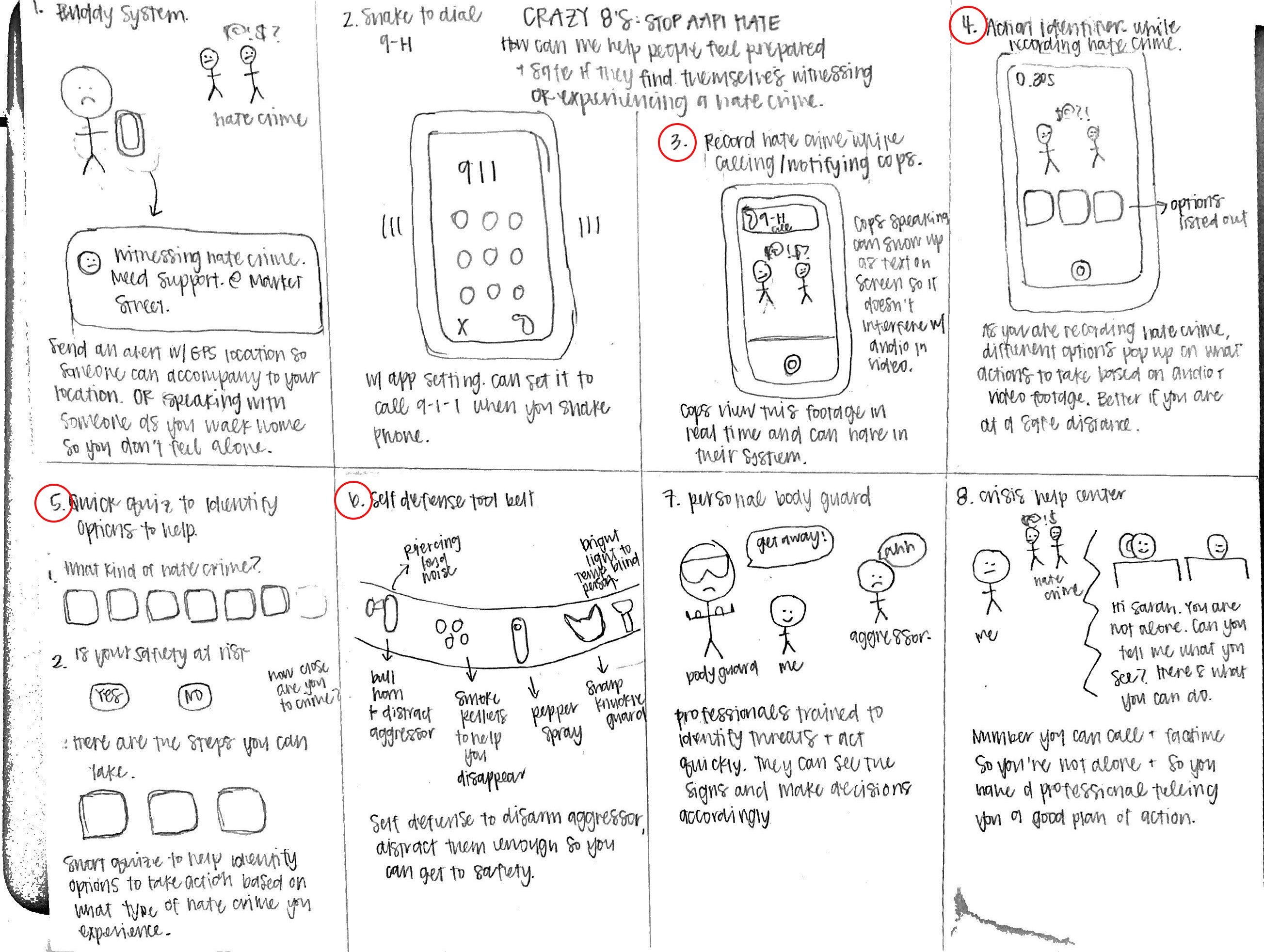
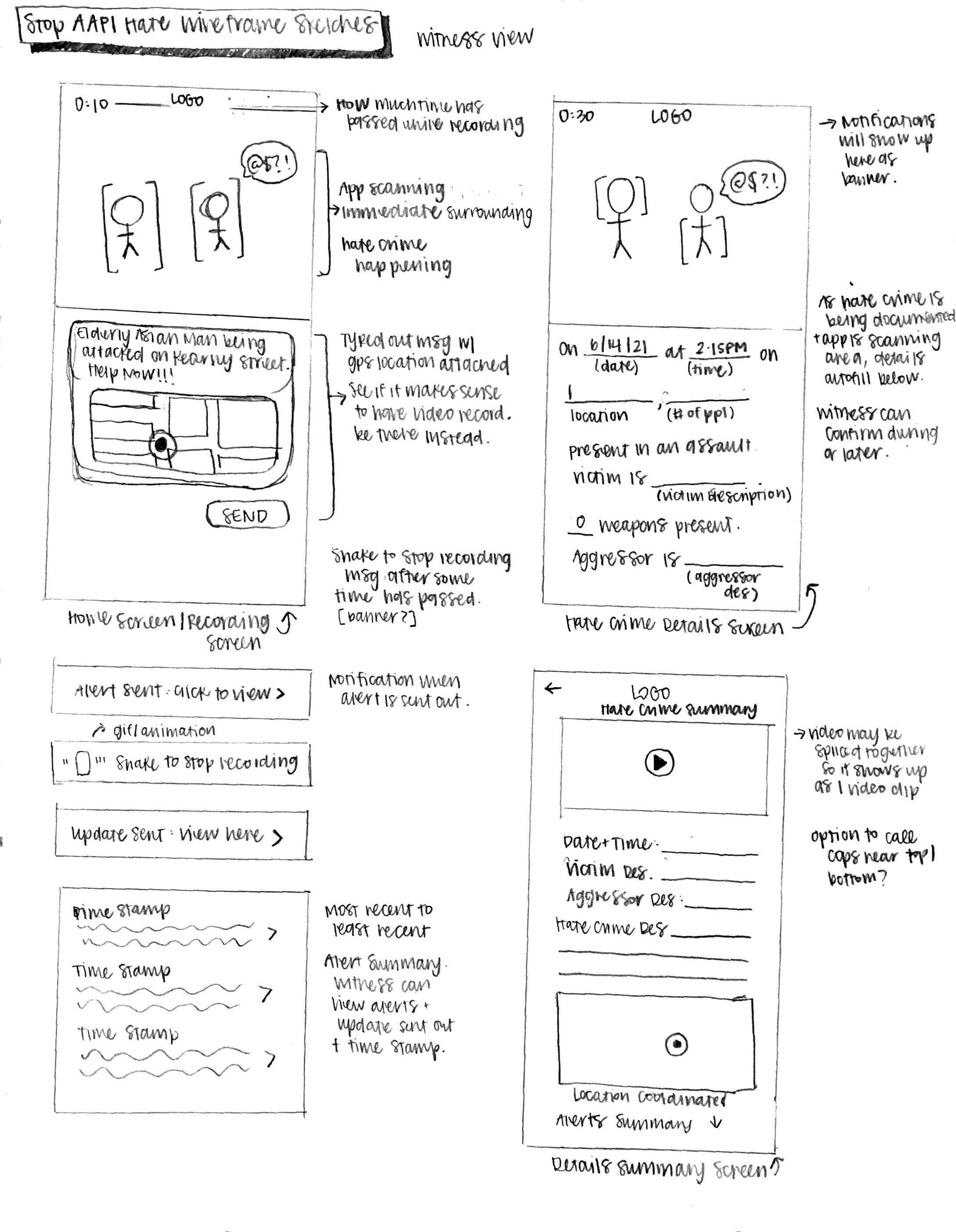
User Flow
Afterwards, I created a user flow to show how a user would document the hate crime and alert nearby users in real time. It was important to show that these two actions were happening simultaneously because I want less mental burden on the witness. Additionally, the option to call the cops at is present throughout the flow just in case things escalate.
Wireframing
I began by building out a lo-fi wireframe from my rough sketches. Afterwards, I built out my mid-fi wireframes by adding cartoon illustrations of a hate incident taking place and other UI elements.
DESIGN EXPLORATIONS
Usability Testing
I conducted remote usability testing via Zoom with 3 individuals frome the ages 17 - 25. All participants are allies of the AAPI community. The goal of the usability tests was to test the efficiency of the current task flow by measuring the amount of time it took for users to complete the entire process of documenting the hate crime, alerting others, and filling out the post crime survey.
Usability Test Findings
SUCCESSES
- Each participant successfully recorded the hate crime and sent an alert to notify others
- Participants mentioned that they liked the idea of app and can see how it would help in addressing the rise in anti-Asian hate crimes
PAIN POINTS
- Only 1 participant was able to complete the task in under 1 minute.
- Lack of guidance - since it was their first time witnessing a hate crime, having written steps of what to do next would be helpful in navigating the app
- Vague wording in post-hate crime survey - for some questions, users were confused by what was asked of them
Iterations
Based on the feedback I received from my usability test, I made the following changes to the prototype.
Automated sending out alerts
In V1: Users would have to click the "Send Alert" button to notify others of a hate crime happening. This was an extra step for the user in an already stressful situation
In V2: After 5 seconds have passed in the recording, an automatic alert is sent out containing a pre-populated SOS message and the GPS location of the hate crime. This helps reduce the mental burden on the user.
FINAL PROTOTYPE
Learnings & Next Steps
The of UX Design
I am so grateful for the opportunity to use what I’ve learned in UX Academy to tackle a pressing issue that hits close to home. There were many times where I questioned whether I was doing this issue justice. Throughout this journey, I realized I was doing just that.
Narrow your focus
During the research phase, I was moved by everything that I learned about AAPI hate crimes and those directly impacted by it. It made me want to create this all encompassing app that could help both victims AND witnesses. I realized that because I was focused on doing everything, I wasn’t able to do much of anything. By narrowing my focus, I was able to figure out what would actually be a helpful solution for witnesses of hate crimes.
If I had more time...
I would love to explore what this app would look like for victims of hate crimes i.e. elderly members of the AAPI community. I would also conduct another round of usability tests to ensure that users can document hate crimes and alert others as efficiently as possible.
